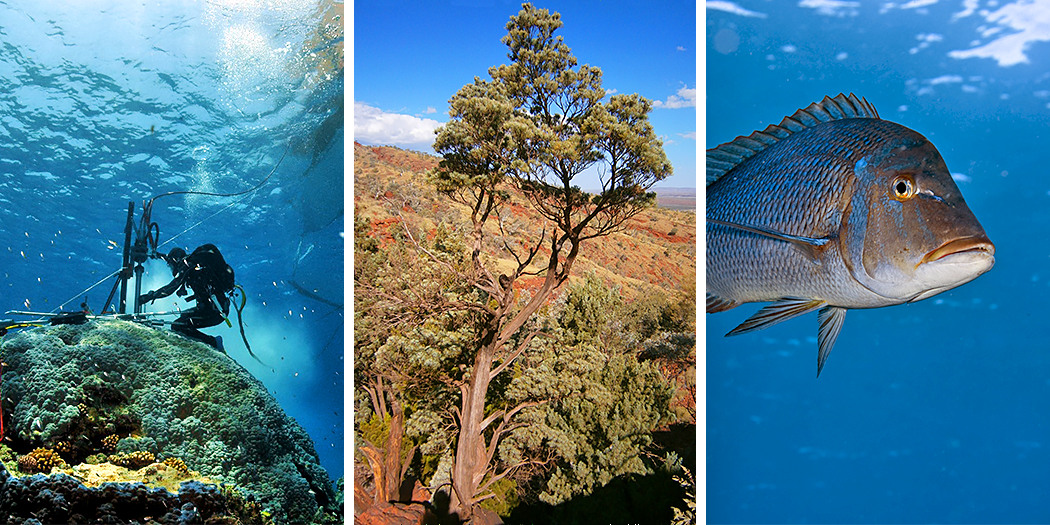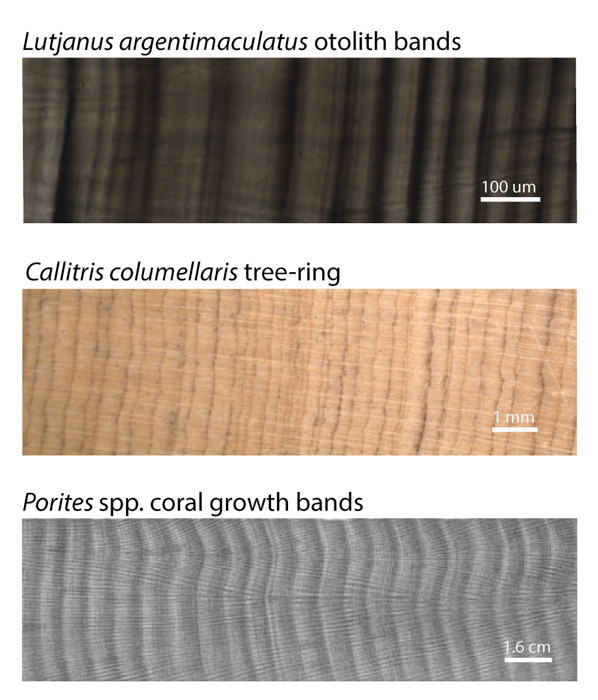Lines of change - coral cores, tree rings and fish ear bones are all showing the effects of climate change. Image: AIMS/UWA/WA Fisheries.
Annual growth rings found in trees, corals and even fish ear-stones have shown that climate change has the same, wide-ranging impact on life, whether at sea or on land. This is according to an international team of scientists who found that annual growth rates over the past two decades were very similar for species collected from both coral reefs and the savannah of northwest Australia.
The result, the first of its kind in the Southern Hemisphere, provides critical insight into the future of life both on land and at sea. By examining the effects of past climate change, the scientists are better able to predict survival and health of species under present day climate change. For example, during El Niño years – periods with less rain and cooler seawater – growth was slower in all study species, but during La Niña years, when it’s warmer and wetter, growth rates increased across all species.
However, the authors caution that because events such as La Niña are becoming more extreme under present day climate change, their impacts today may differ from those historically. For example, in the summer of 2011, higher sea surface temperatures had disastrous effects, killing fish and bleaching corals.
The growth bands in fish ear bones (top), trees and coral cores tell the story of past climates. Scientists have found they are telling the same story. Image: A.O'Donnell (UWA), J.Lough (AIMS); and J.Ong (AIMS/UWA).
Most importantly, the study showed that different species, even from different environments such as coral reefs and savannahs, respond in the same way to climate phenomena. This means that historic data from one species can be used to explain patterns in others. Given the large historical archives of fish ear-stones, coral cores and trees rings held in collections worldwide, there are many further opportunities to expand this research and improve climate models going forward.



